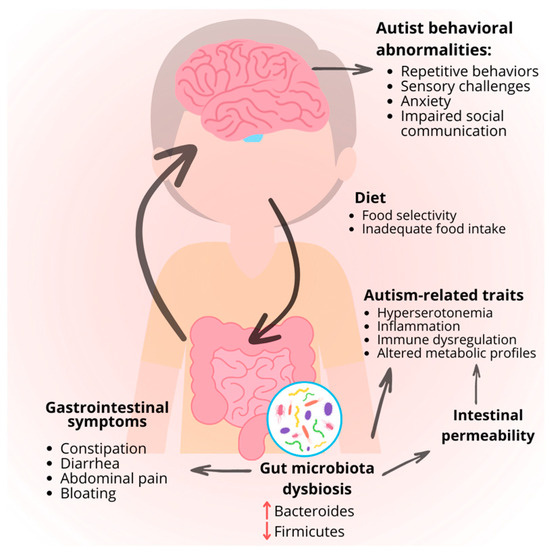What daily connections can flourish with Autism Spectrum Therapies
Promoting Inclusivity: How to Create Supportive Settings for Those With Behavior Autism
Producing supportive environments for people with behavioral autism is vital for cultivating inclusivity. What particular actions can you take to guarantee these individuals grow in various setups?
Understanding Behavior Autism: Key Qualities and Obstacles
Understanding behavioral autism entails recognizing its crucial characteristics and the difficulties it offers. Individuals with autism commonly show problems in social interaction, communication, and recurring actions.
:max_bytes(150000):strip_icc()/VWH-LauraPorter-SpectrumOfAutismTraits-4000x2700-0b5d3311e5794f6ca7e72bdc4672eae5.png)
Supporting someone with behavior autism implies being patient and versatile. You'll require to develop an atmosphere that decreases tension and promotes convenience. Acquainted routines can help, in addition to clear, regular communication. Understanding these characteristics will certainly lead the way for more reliable assistance and a much more inclusive setting.
The Function of Empathy in Supporting Individuals With Autism
Compassion plays an important function in sustaining individuals with autism by helping you understand their special viewpoints. By exercising energetic listening techniques, you can build emotional links that cultivate depend on and communication - Autism Spectrum Therapies. This understanding not just improves your partnership but additionally creates a much more supportive setting for them
Comprehending One-of-a-kind Point Of Views
When you consider the special viewpoints of individuals with autism, it comes to be clear how essential empathy is in giving efficient assistance. Everyone's experience is formed by different sensory sensitivities, interaction styles, and psychological responses. By tipping into their footwear, you can begin to comprehend their world. This understanding aids you respond more thoughtfully to their demands and difficulties. Acknowledging their toughness and struggles fosters a much deeper connection, developing trust fund and urging open interaction. Your ability to understand allows you to develop a setting where they really feel secure, valued, and comprehended. This supportive ambience encourages people with autism to express themselves, eventually improving their well-being and development. Compassion is not just a skill; it's a vital structure for meaningful connections.

Active Listening Strategies
Energetic paying attention methods play an important role in sustaining individuals with autism, as they foster a much deeper link and understanding. You show that you value their sensations and thoughts when you involve in active listening. Keep eye get in touch with, nod, and use spoken affirmations to indicate your attentiveness. Reword what they state to confirm your understanding, and ask flexible questions to urge additional expression. Avoid disrupting, allowing them to express their points fully. Be conscious of your body language; it ought to be open and inviting. By exercising these strategies, you produce a safe room where individuals really feel heard and appreciated, ultimately boosting their communication and psychological well-being. Compassion beams with when you proactively listen, reinforcing your relationship with them.
Structure Emotional Links
Creating a supportive environment through active listening naturally leads to developing emotional connections with individuals on the autism spectrum. When you genuinely involve, you're not simply hearing their words; you're comprehending their sensations.

Reliable Communication Strategies for Inclusivity
Reliable communication strategies play a necessary function in fostering inclusivity for people with behavioral autism. Beginning by utilizing clear, simple language that's understandable. Stay clear of idioms or abstract phrases; they can be complicated. Instead, be straight and specific concerning what you imply.
Nonverbal cues are just as essential. Focus on your body language, faces, and tone of voice, as these can share more than words. Keep eye contact and usage motions to improve understanding.
Furthermore, be client and offer individuals time to procedure info. Encourage them to reveal their ideas and feelings, revealing that their input is valued.
Active listening is vital; repeat or reword what they've claimed to verify understanding. Finally, adjust your communication methods based on specific preferences, whether it's with aesthetic help, written directions, or other tools. This personal touch strengthens incorporation and aids construct meaningful connections.
Tailoring Assistance Equipments in Educational Setups
In educational settings, you'll wish to concentrate on Individualized Education and learning Program (IEPs) that satisfy each student's special demands. Developing a sensory-friendly class design can also enhance learning by reducing disturbances and promoting comfort. Together, these methods can cultivate a setting where pupils with useful site autism grow.
Embellished Education Plans
While steering with the intricacies of autism in educational settings, Individualized Education and learning Plans (IEPs) play a vital duty in customizing support systems to fulfill each pupil's distinct demands. It's important to team up with teachers, experts, and your youngster to create a comprehensive plan. Remember, a reliable IEP is not simply a file; it's a living tool that adapts to your child's progressing needs, ensuring they thrive in their academic setting.
Sensory-Friendly Class Design
Producing a sensory-friendly classroom can considerably boost the learning experience for students with autism. Beginning by examining your classroom's illumination; soft, natural light can lower overstimulation. Include versatile seating alternatives, like bean bags or floor cushions, to permit trainees to discover their convenience area. Usage calming shades on walls and decoration to create a calming ambience. Take into consideration including sensory edges with fidget devices, noise-cancelling earphones, or heavy coverings for students that require breaks. Arrange areas to lessen mess, assisting trainees focus far better. Finally, establish clear routines and signals to interact changes, relieving anxiety. By making these modifications, you'll create an environment where trainees with autism feel much more supported and engaged in their learning trip.
Producing Inclusive Workplaces for Individuals With Autism
To foster an absolutely inclusive workplace for people with autism, employers should recognize the one-of-a-kind strengths and obstacles these other individuals bring. Begin by advertising clear communication and giving in-depth work summaries that detail expectations. This aids individuals understand their roles much better and reduces anxiousness.
Take into consideration carrying out flexible job arrangements, such as remote job or changed hours, to accommodate different sensory needs and personal choices. Educating your staff on autism understanding is important; it can boost empathy and promote an encouraging atmosphere.
Developing quiet rooms where workers can reenergize throughout difficult minutes can also make a considerable distinction. Encourage the use of assistive modern technologies that help improve and improve jobs performance.
Ultimately, valuing diversity will certainly not just profit individuals with autism but will certainly additionally improve the whole team, resulting in a much more vibrant and innovative workplace. Embrace these approaches to grow an environment where everyone can flourish.
Motivating Social Communication and Area Involvement
Urging social communication and neighborhood involvement is necessary for people with autism, as it assists develop confidence and fosters purposeful partnerships. To produce a supportive environment, beginning by supplying opportunities for people to get in touch with others in a comfortable setting. Arrange group tasks that accommodate different rate of interests, such as art classes, sports, or neighborhood service projects.
You can also help with smaller sized, structured celebrations where everybody can share their ideas and experiences. Urge open communication by modeling respectful listening and compassion. Establishing peer mentorship programs can aid produce bonds and offer advice.
Entail households and local organizations to broaden the support network and advertise inclusive events. Keep in mind, the trick is to produce safe spaces where individuals with autism feel valued and recognized. By fostering these connections, you'll assist them flourish socially and establish a feeling of belonging within the area.
Resources and Tools for Building Supportive Environments
While structure encouraging atmospheres for individuals with autism may seem tough, numerous sources and tools can make the process simpler and much more effective. First, consider using visual supports like timetables or social stories to aid people comprehend their daily regimens and social situations. Apps developed for interaction, such as AAC (Augmentative and Alternate Interaction) devices, can likewise enhance communication.
Furthermore, training programs for staff and volunteers on autism awareness can promote compassion and understanding in your neighborhood. Explore regional click this site organizations that use resources or workshops customized for supporting individuals with autism.
Creating sensory-friendly areas with calming components-- like soft lights and peaceful areas-- can benefit those that might come to be overloaded. Lastly, establishing links with neighborhood support groups can give continuous support and feedback, assisting you refine your approach and assurance inclusivity for all.
Often Asked Inquiries
How Can I Educate Others Regarding Behavioral Autism Efficiently?
To educate others about behavioral autism efficiently, share personal tales, give clear sources, and urge seminars - Autism Therapist. Use relatable examples and highlight the significance of recognizing different perspectives to promote empathy and recognition
What Prevail Misunderstandings About Autism That Need Dealing With?
You might believe autism just influences communication skills, yet that's just one aspect. Numerous think it's entirely a childhood years condition, when as a matter of fact, it spans across every ages and shows up in a different way for each and every person.
How Can I Promote for Autism Recognition in My Area?
You can promote for autism understanding by organizing area occasions, sharing interesting sources, and collaborating with regional organizations. Use social networks to get the word out, and motivate open discussions to promote understanding and approval.
Are There Particular Sensory-Friendly Spaces for People With Autism?
Yes, numerous communities offer sensory-friendly rooms, like quiet spaces in libraries, specialized play locations, or marked hours at museums. You can explore regional resources and advocate for more comprehensive rooms to support individuals needing them.
What Duty Do Household Members Play in Sustaining People With Autism?
Family members play a crucial role in supporting people with autism. You can provide inspiration, understanding, and perseverance. By proactively taking part in their lives, you help build self-confidence and foster independence, creating a nurturing environment.
Creating supportive environments for people with behavior autism is essential for fostering inclusivity.Creating a supportive environment through active listening normally leads to building psychological connections with people on the autism range. Developing Inclusive Workplaces for People With Autism.
To foster a truly inclusive workplace for individuals with autism, employers should acknowledge the special toughness and obstacles these people bring. Keep in mind, the key is to create risk-free areas where individuals with autism really feel valued and comprehended.